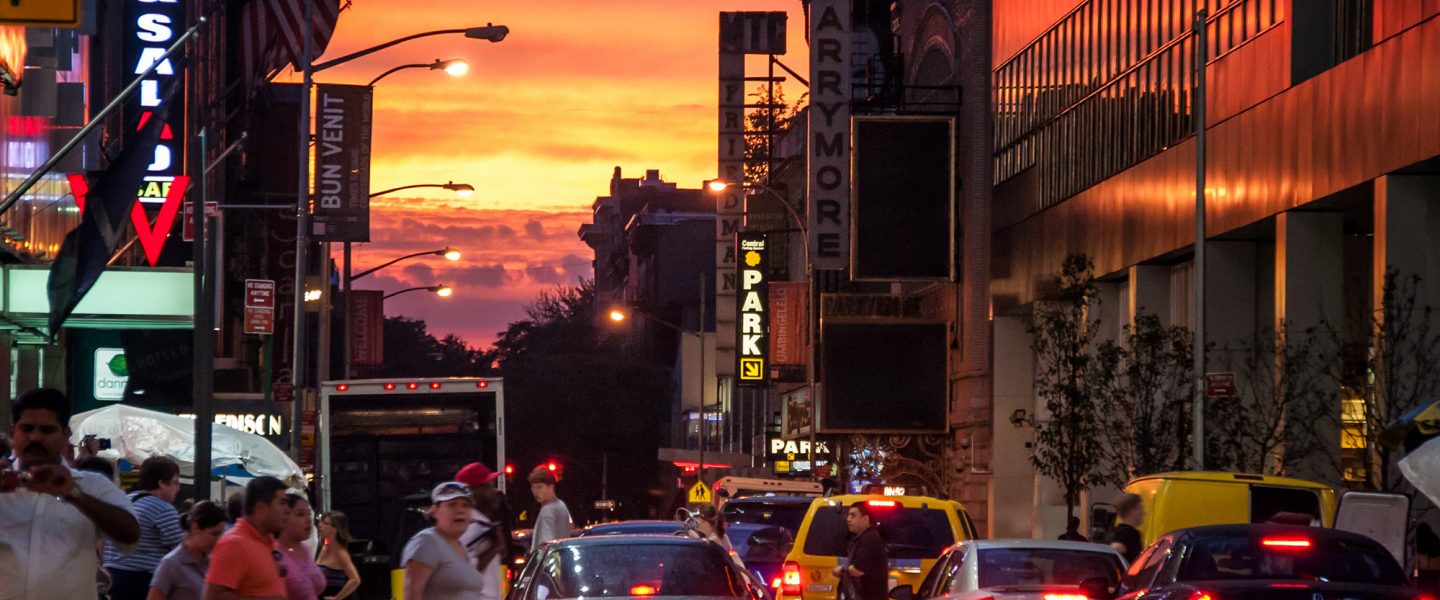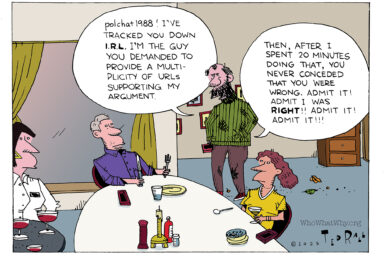Rumors of the city’s death have been greatly exaggerated.
|
Listen To This Story
|
Daniel Pinchbeck recently wrote an essay on this site posing the rhetorical question, “Has New York Lost Its Soul?” I assumed it was rhetorical, because everything in his jeremiad suggested it was an open and shut case: His city has become a soulless hellhole.
His self-described rant is illustrated with a photo of an angry King Kong grasping a fainted Fay Wray in his left paw, and lower in the piece, a clip of the dystopian film I am Legend (2007), starring Will Smith as the supposedly “last man on earth,” living in an empty and largely destroyed Manhattan overtaken by weeds (the trailer doesn’t show any of the other boroughs).
Pinchbeck describes New York’s inhabitants as having “willingly surrender[ed] to a massive yet invisible surveillance-and-control complex … wandering around in the ruins and broken shards of a defunct civilization. … A lot of the office buildings seem half or three-quarters empty. Scaffolding goes up on many buildings and stays for years. Trash piles up everywhere. My neighborhood always suffered from a massive rat problem.” It all sounds remarkably like the city depicted in the film clip.
He further complains of “febrile hordes of college students, seeking cheap drinks and cheap thrills,” which “increasingly feels like frantic, purposeless activity,” hollowed out by the menace of smartphones.
I don’t actually disagree with much of his description of the city (I’ve seen the smart phones, scaffolding, and rats), just with its emphasis and what he thinks it means for the life of the city.
Much of what he writes could easily have been written 50 years ago, or a half-century before that. Every old geezer (I’m one myself) bemoans what’s happened to their beloved hometown. This is why we’re old geezers.
His physical description of the city seems almost quaint compared to what I remember of New York in the 1970s, when landlords set their own buildings on fire for the insurance money, much of the South Bronx resembled a dystopian nightmare, and you risked your life heading into the East Village just to get potato pancakes at Veselka.

Things weren’t much better in the 1930s, when people lived in shacks in Central Park and on a dump behind Beekman Place. For lively depictions of this situation, watch My Man Godfrey (1936) or Dead End (1937).
I confess, I left New York over a decade ago partly because I didn’t think it was my city anymore. I didn’t want to be one of those old fogies telling people they should have seen this city back in the ’70s, when Talking Heads played CBGB and the subway was just 25 cents. I moved to London, another city now in as much of a decline as New York is experiencing (in pure economic terms, far worse), and I still like it here.
There are a lot of people our age who pine for the old days. When I first moved to New York, I met old guys pining for their old days.
My dad was nostalgic for New York in the late ’40s, when the city looked architecturally complete, with the early plays of Tennessee Williams and Arthur Miller appearing on Broadway, a young Leonard Bernstein conducting the New York City Symphony, and George Balanchine directing the New York City Ballet.
Abstract expressionism had wrestled the gravity of the art world away from Paris, and the Rockettes were doing their thing at Radio City four times a day.
Was that the apotheosis of New York? It was to some. But at the same time, it was two decades before the civil rights movement, and the city’s neighborhoods were still largely divided by race.
Twenty years later, in the 1960s, London had unaccountably become the cultural capital of the world, with the Beatles recording at Abbey Road, Harold Pinter and Tom Stoppard introducing their startling works in theaters, and Carnaby Street and Kings Road setting the standard for the new, hip fashions.
For many, this was the city at its height, but at the same time, most people were still living lives not so appreciably improved from the austere 1950s, and the true heart of “swinging London” has been estimated to involve not much more than 4,000 people in total.
But let me just state that what might be unfortunate for Mr. Pinchbeck and myself will be a godsend for the next generation. Because this is how cities revitalize themselves. New York (where I lived from 1978 to 2006) and London (2006 to the present) have become too expensive for many young people to move there.
In Britain that’s been to the advantage of smaller cities like Brighton, Bristol, and Edinburgh, that seem far more vibrant in many ways than London is, because young creative people have settled there, set up small business, and opened theaters, art galleries and music venues, creating a more interesting, and at the same time affordable, place to live.
Hopefully even London and New York will become affordable again. If so, it will be partly the result of people fleeing these cities in the wake of the pandemic changing work habits, causing the collapse of the cities’ tax base. This will eventually bring rents down.
A recent article in The Washington Post addressed the problems of “lifeless” downtowns, and posited two solutions: get people back to work in their offices and convert unused office space for residential use. This will help revitalize cities and restore public transit, currently suffering crippling under-capitalization from low ridership.
In New York, subway use is said to be still only about 65 percent of pre-pandemic levels, and it’s not expected to reach 80 percent of pre-coronavirus ridership until 2026.
Maybe it’s time for us aging boomers and Gen Xers to leave the city to the next generation with their annoying smart phones and cheap drinks. I may not know exactly what Daniel Pinchbeck or his soulmate Patrick Harpur mean when they write about souls, or lack thereof. But I’d be happy to leave it to the next generation to figure out. It’s their town now anyway.
—
J.B. Miller is an American writer living in England, and is the author of My Life in Action Painting and The Satanic Nurses and Other Literary Parodies.





